SQUIRREL_13090289
Alex's time on the Rift Zone has officially come to an end. But, after a year of hammering the bike in terrain at the extreme ends of its performance bell curve, he's so impressed by its performance that he's going to add it permanently to his quiver – if Marin will let him…
My Rifty has undergone quite the transformation from its base spec, now sporting forks, a shock, drivetrain, brakes, and a seatpost with RRPs that outstrip its full-bike original asking price by nearly £500.
That’s not a flex, and neither is it evidence any of those standard parts needed upgrading off the bat. In fact, they’re all functionally brilliant, but they lack some of the glossy je ne sais quoi of their more luxurious counterparts.
I think only those looking for specific performance gains will want to make the same (or similar) upgrades as me.
For example, if you hate routing cables, an AXS drivetrain and dropper post are compelling, and those after more braking performance will want to ditch the DB8s.

Upgrades aside, the Rifty has performed exceptionally throughout the year, lapping up the hardest hits, the longest rides and the worst conditions with incredibly little maintenance.
Yes, the paintjob looks ready for a ‘Nitromors refresh’, but its pivot points and bearings have been incredibly resilient.
It has been enormously fun to ride, too. It may not be the fastest, plushest, lightest or most beautiful bike, but it has consistently put a smile on my face no matter the terrain, which makes it the bike I’m most likely to swing a leg over in my free time.
That’s a hefty feat when I’ve got unfettered access to the world’s hottest rigs, cementing the Rifty as a top performer and one I’d like to add permanently to my quiver.
Marin Rift Zone 29 XR highs

Call me a romantic, but the best parts of my year with the Rift Zone have been when I'm spending time with awesome people in fantastic places.
Sometimes, that's been as simple as a quick ride from the door up my local trails in the mild summer temperatures, with nothing but the smell of fresh air and the gentle glow of the sun.
At other times, it has been hectic enduro descents with old friends, both of us pushing our bikes to the limits.
Therein lies the essence of the Rift Zone; its performance is so convincingly adept that it fades into the background, enabling you to float on with your day.
Marin Rift Zone 29 XR lows
Punctures are always a low point of any ride, and it took me quite a while to find the balance between weight and durability with my Rifty.
I ended up running a DoubleDown Maxxis rear tyre, the brand's second-toughest. While unusual for a trail bike, it's the only setup that could withstand the rowdy riding I enjoy the most.
Other lows included damaging the Just Riding Along rear rim beyond repair and having to get my GX Transmission AXS derailleur fixed under SRAM's warranty. I was lucky enough to have spare wheels and derailleurs so I could continue riding, but not everyone will be in the same position as me.
Marin Rift Zone 29 XR long-term review verdict

Immensely capable and hugely fun to ride, the Rift Zone is one of those bikes that's at home riding almost anything – big mountain epics, laps at a bike park or just rumbling along fireroads.
I've swapped out and upgraded a good number of its parts, although not in the quest for absolute performance gains – rather because each component change has fulfilled one of my specific requirements.
Riders won't be disappointed by the Rifty's stock spec, but those looking for a little more luxury – or robustness – will probably be scouring the web for deals on upgrades.
Marin Rift Zone 29 XR in brief
Marin’s 2024 Rift Zone 29 XR – which stands for ‘extra rad’ – trail bike is designed to tackle the rough and tumble of lapping your favourite bike park runs while being just as comfortable covering miles of beautiful singletrack on all-day epics.
To do so, it builds on last year’s model by upping fork travel to 150mm from 140mm. Its extended front end squish is matched with the same 130mm rear end.
But weighing a chunky 14.85kg stock (size large), I’m looking to shave that down with choice upgrades to improve climbing performance, while not negatively impacting just how rad it feels on the downs.
The brand has also relaxed the head angle from last year’s 65.5 degrees to a real-life 64.5 degrees.
Previous updates follow…
Marin Rift Zone 29 XR long-term review – update four
Fitting SRAM’s GX Transmission went without a hitch. Along with the delight I took from removing the rats’ nest of cables, simply following SRAM’s clear instructions meant installing the adjustment-free drivetrain tech put a massive, beaming smile on my face.
Once out on the bike, memories of my prolonged time with XX Transmission came flooding back, even with the relatively budget-orientated GX.
Shifts are so unbelievably crisp, created by the patiently waiting, shift-ramp-aligning derailleur. You can push the Pod controller shift button while hammering the pedals as hard as your heart desires, not giving the derailleur’s loyal and predictable servitude a second thought.
After racking up over 1,000 miles on the most affordable Transmission group – read my full GX Transmission review here – unfortunately not all was rosy. Despite staving off multiple run-ins with the ground, rocks and otherwise, several wet rides caused the derailleur – while straight and in good nick – to become unresponsive.
Seemingly suffering from electrical gremlins, I contacted SRAM and sent it back to the UK-based service centre.
SRAM inspected the derailleur and declared it repairable under its two-year warranty, but stock issues specific to the part required to fix it meant it had to be replaced entirely.
They sent me a replacement, which I bolted to the bike right away to keep me riding, while mine was being repaired.
Another blow to my hopes for a lighter Rift Zone

In another blow to my initial weight-saving modus operandi, I’ve had to swap out the affordable and relatively light Just Riding Along (JRA) Ravine rear wheel for a burlier example.
While I don’t actively go out of my way to break stuff, it seems I’ve been continuing the rather predictable and career-long theme of ruining most components I get my hands on. Wheels (and tyres) are probably the most regularly destroyed of my components, so it’s not really a surprise the JRAs fell foul of my notoriously harsh riding style.
During a particularly spirited descent down Glentress’s infamously rocky and puncture-inducing Ho Chi Min – that was used in the UK’s inaugural EWS back in 2014, to give context for its ferocity – I managed to flatten both sides of the rear Ravine rim’s sidewall.
After pumping a small compression with my usual amount of aggression, I heard the tell-tale hiss that signified I’d flatted yet another tyre. I pulled over to inspect the damage as the air was still rushing out, fearing the tyre was pinch-flatted or slashed at the worst.

Seeing my recently upgraded Maxxis DoubleDown (DD) Dissector had staved off the impact by remaining rip, tear and puncture-free was a relief, but it had transferred a good chunk of the force directly into the rim’s sidewall.
While thankful I wasn’t going to need to get my trusty puncture repair kit out, my heart sank because I was now expecting a more significant repair bill; a cracked rim perhaps, or maybe a punctured rim bed caused by the impact – both things that have happened to me before on Ho Chi Min.
But it was neither of these; instead, the rim’s sidewall had been squashed and flattened outwards, breaking the seal between tyre and rim, which caused all the air to gush out. Sealant was unable to fill the void between the rim’s new profile and tyre, so I cracked out my Tubolito lightweight emergency tube to limp home.
Saving my bacon, I gingerly headed back to base with the tube installed and started the next steps towards further puncture- and failure-proofing the Rifty’s components.
Strong, light, reliable – pick two

Being in the fortunate position to have spares kicking about in the garage (from previous tests), I quickly settled on a replacement rear wheel. Cue DT Swiss’s 4.5-star rated eMTB-specific HX 1700 rear wheel.
This is built using the brand’s welded HX 531 rim on a chunky 350 Hybrid hub, both of which have been beefed up over the standard model for the rigours of e-biking. I figured if I couldn’t destroy the HX 1700 wheels on my ebike, they’d certainly be strong enough for my trail bike.
So far, I can confidently report they’ve handled the rough and tumble of my definition of trail riding, and haven’t needed a single spoke re-tension or true.
The biggest trade-off here is how much extra weight the bike has put on. Add together GX Transmission, Maxxis’ burlier EXO+ and DD tyres, a DT Swiss rear wheel and the RockShox Reverb post and it’s now tipping the scales at a whopping 15.6kg with my favourite set of STAMP pedals fitted. Ouch.
Weight gains aside, I think the Rifty’s ability to stare down the barrel of the gnarliest, roughest and wildest terrain without so much as flinching, while also being comfortable ridden day-long on more undulating terrain, is worth more than just a little recognition.
While a good chunk of the bike’s bits have been ragged, broken, repaired or replaced, the frame and its bearings – although looking battered and maybe not running as smoothly as day one – are still performing as expected. For what is essentially a bike at the more budget end of the spectrum, that’s damn impressive. I’ve not been kind to it, that’s for sure.
Marin Rift Zone 29 XR long-term review – update three

My latest changes to the Rift Zone are intended to up practicality and reduce maintenance hassle, at the same time as adding an element of up-market refinement.
While that may sound as if I’ve treated it to the bike equivalent of a spa day with a bar-to-derailleur makeover, what I’ve actually done is remove all the dropper and drivetrain cables.
Fitting RockShox’s brilliant – and recent five-star-winning – AXS Reverb post has helped do this (even though the Rifty’s routing is good) and tidied up the handlebar in the process.
The battery-powered, wirelessly operated post has 170mm of drop in this 30.9mm variant, with an incredibly smooth and reliable action – and, most importantly, it's so easy to install.

Other benefits of a wirelessly operated post include being able to swap it from one bike to the next without a full strip-down and re-install. That helps justify the Reverb’s £750 asking price – in theory, you’d only need one post for multiple bikes.
Not content with the remaining cables, I finally got round to fitting SRAM’s GX AXS Transmission on my UDH-equipped bike.
Once again, removing the cables for the GX Eagle drivetrain was an exercise in cathartic minimalism, cutting the clutter. Plus the Bridge clamp means there are no extra band clamps around my bar, boosting that clean-cockpit feel.

Still not content, I swapped out the stock DB8 brakes for some punchier Code Ultimate Stealths. The newest Stealth lever design brings the (remaining) cables as close to the bar as possible, cleaning up the lasso-style looping of brake hoses seen on the older designs.
The Ultimate-level Codes get pad-contact and lever-reach adjustments over the minimalist DB8s, and the power increases in the process.
I’ll have more on the performance of these upgrades in my next update.
Previous updates follow…
Marin Rift Zone 29 XR long-term review – update two
Mountain biking can be seen in two very different lights. On the one hand, it’s a sport of marginal gains where the world’s top racers are looking to shave off every bit of weight possible, unlocking suspension, frame, tyre and wheel performance increases mere mortals wouldn’t be able to detect.
On the other hand, we normal folk – with me very much included – will barely notice the difference between the mid- and top-spec bikes in any given model’s range.
Befitting this tale of two halves is my quest to shave weight from the Rift Zone.

Having set my sights on swapping out the Marin-branded bar, stem and grips since my previous instalment, I’ve ended up fitting PNW’s carbon fibre Range Handlebar Gen 3, accompanying Range Stem Gen 3 and a pair of regular Loam Grips, which are some of my favourites.
Initially jubilant that the carbon material and shorter grips would shave a chunk of weight, it turns out this upgrade is safely in the marginal gains category.

The relatively quick swap has nipped a mere 28g from the bike’s headline weight figure. That's equivalent to a whistle-whetting gulp of water, almost an entire portion of my favourite snack bar (Cadbury Brunch Bars, FYI), or skidding a significant chunk of your tyre’s tread off by locking the back wheel up down a tarmac road.
Although no saving is to be dismissed, this one is likely to go unnoticed out on the trails, especially given my luddite rather than gifted skills on the bike.
What’s likely to make a bigger impact, however, is the swap from Marin’s skinny 31.8mm-diameter bar to the chunkier 35mm of the PNW model. While it’s possible to retain the smoothness and ‘compliance’ (shudder – I hate that word) of a narrower-gauge bar with thicker-diameter examples – see OneUp’s models – quite a few brands sprinkle a little too many stiffness-creating ingredients into their efforts.

Of course, I’m saving any judgement until I get out and ride the things, and at least I’m confident knowing the grips, wheels, tyres and frame won’t be contributing to any changes in ride feel.
I’ve got bigger swaps in mind for the future though; I’ve been eyeing up the delights of a wireless dropper post, weight-saving or not.
Marin Rift Zone 29 XR long-term review update one

Before I’d even had time to bed the brakes in, the Rift Zone got to work helping me review six mountain bike wheels for a recent group test.
It proved to be the ideal tool for the job, accompanying me on the same test loop multiple times for each of the hoops so I could make proper back-to-back comparisons.
My test lap used bits of the famous Glentress trail centre, mixed and matched with the most challenging off-piste singletracks to help vary the terrain, in order to really push the wheels to their limits.
Of course, the steadfast and predictable performance of the Rifty enabled me to dive deep into the performance of each wheel, not showing any distracting or untoward ride qualities.
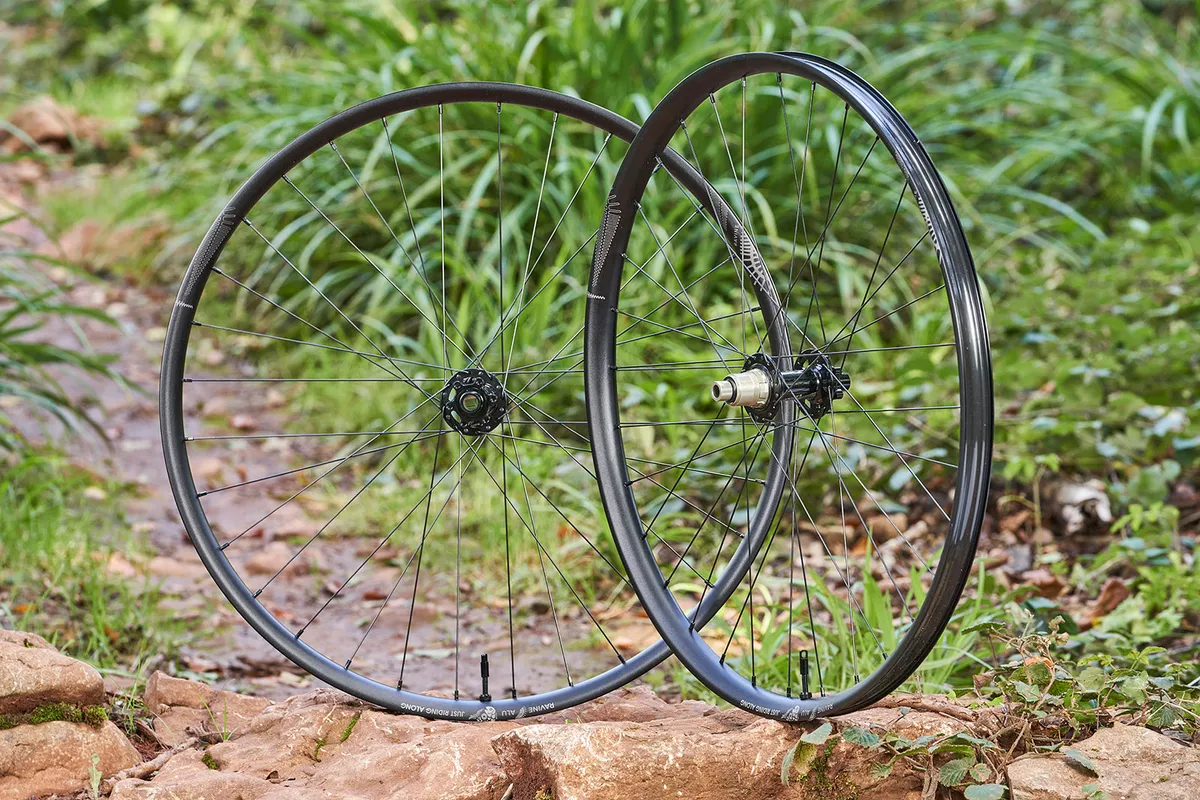
While testing the wheels, I also pushed the bike’s limits up to the extremes of its bell curve. High-load berms – used to investigate the rim-tyre connection and the wheel’s stiffness – put just as much force through the frame as the hoops. But not once did the Rift Zone falter, moan or crunch.
Rock gardens were intentionally and lazily banged through in a bid to highlight rim-sidewall weaknesses and find out how much spoke noise there was. Equally, rough, high-speed sections of trail were ploughed into headlong.
Again, the Rifty remained unfazed and stoic in the face of gruelling punishment.

As a reward for its service, and to begin my journey towards reducing its rather portly headline weight figure, I swapped out the standard Marin-branded rims for what I deemed to be the best set of hoops out of the six I tested.
Cue the Just Riding Along Ravines. Weighing only 1,790g a pair, fitting these to my bike has dropped a not insignificant 440g, taking the bike’s weight to 14.41kg without pedals.
It’s a great start, but there’s more work to be done, so keep tuned to find out what adventures I’ve been on and how I’m going to save even more weight.
Marin Rift Zone 29 XR frame, suspension and specifications
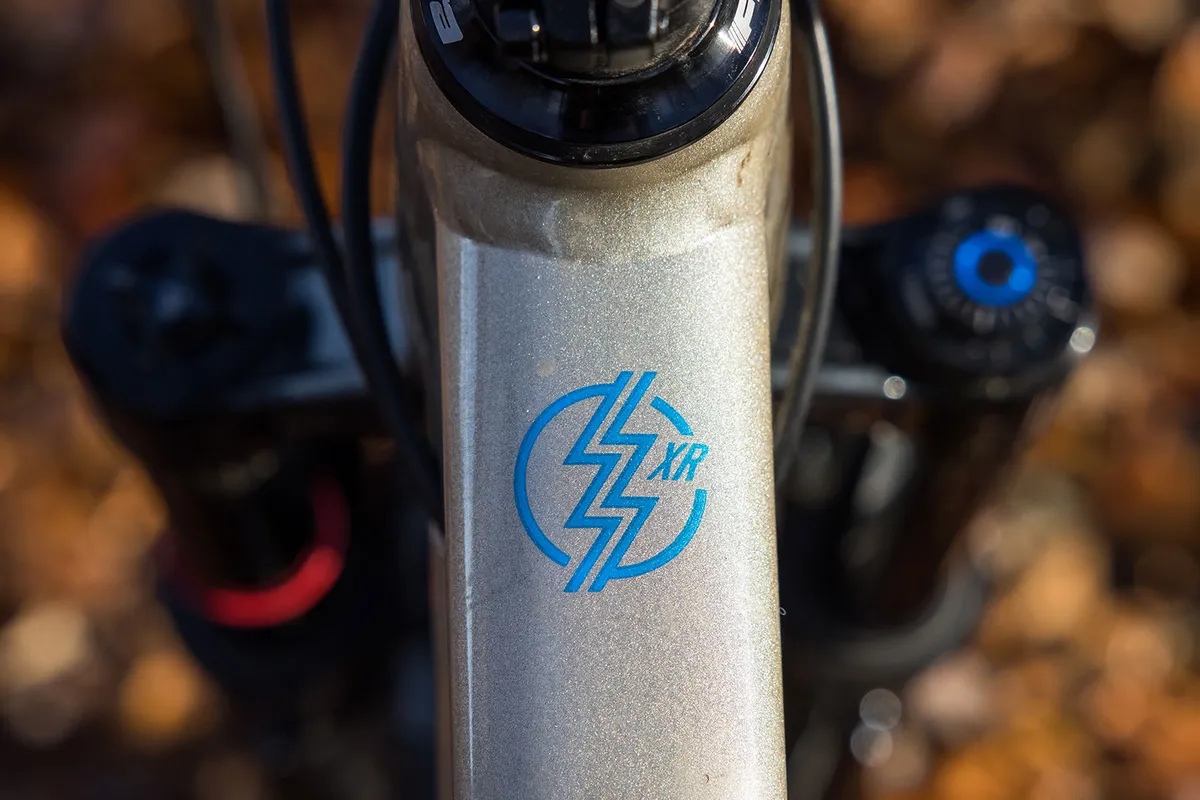
Built using the brand’s Series 3 aluminium, the Rift Zone’s tubes are curved and smooth, boasting an elegant, uninterrupted line from the head tube to the rear axle.
Its cables are routed internally through the front and rear triangles, and exit briefly around the bottom bracket, keeping looks sleek.
There’s a single bottle mount on the top of the down tube, a 73mm threaded BSA bottom bracket and 148x12mm Boost rear-axle spacing.
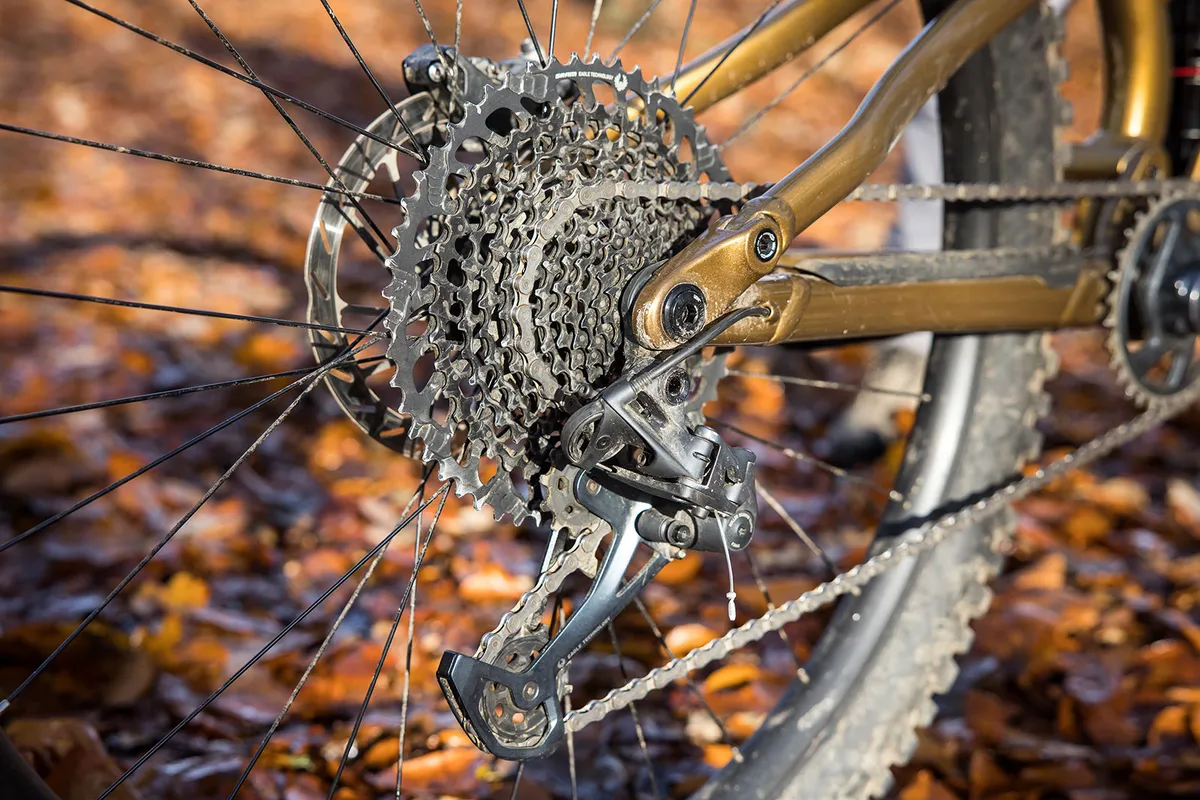
All Rift Zones use SRAM’s Universal Derailleur Hanger, and while this model only gets the brand’s mechanical GX Eagle drivetrain, the frame is ready for a SRAM Transmission upgrade. Marin even sells a GX Transmission Rift Zone for £4,745.
The Rift Zone uses Marin’s 130mm-travel MultiTrac rear-suspension design. This is a single-pivot system with a linkage to drive the rear shock, tuning the leverage rate.
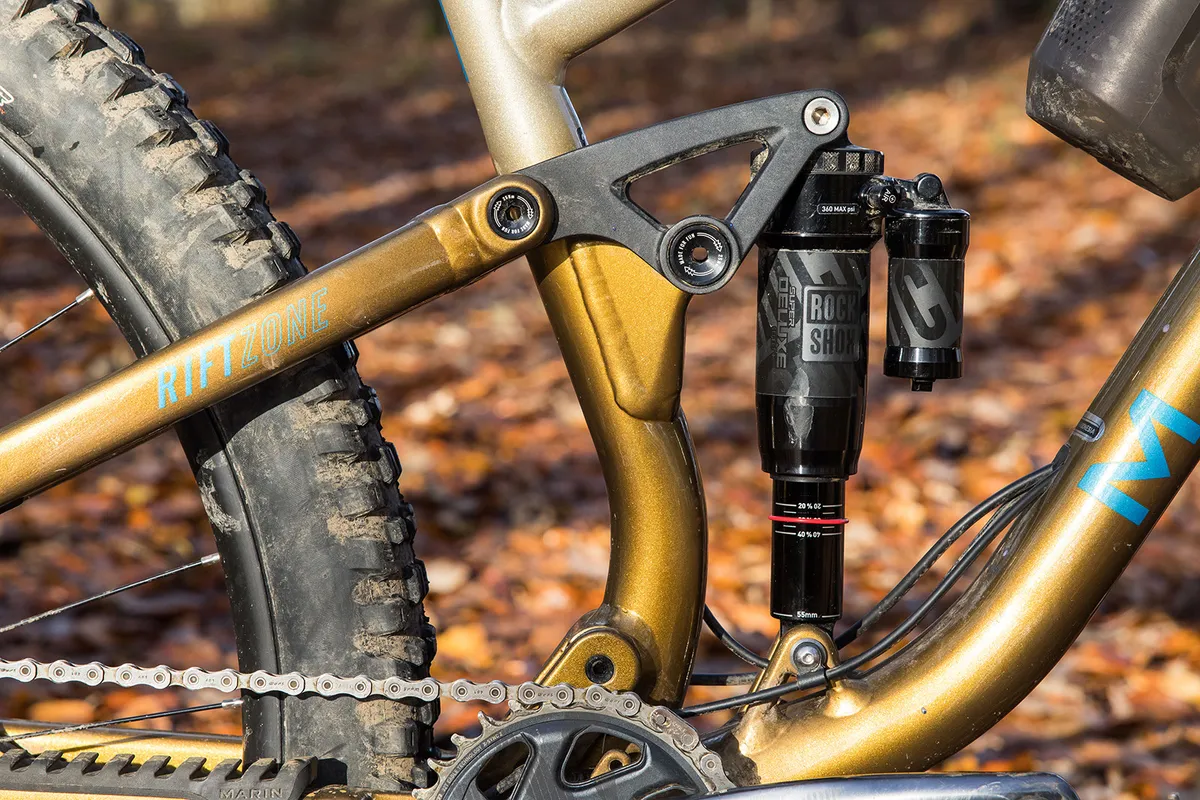
It’s claimed to absorb big hits, and provide impressive small-bump sensitivity and a good pedalling platform.
That bounce is damped by a RockShox Super Deluxe Select+ shock, fitted with a custom tune.
It’s paired with a RockShox Lyrik Select+ with Charger 3 cartridge, which, except for the ButterCups and increased internal bushing overlap, is identical to the Ultimate version of the same fork.
Along with SRAM’s 12-speed GX Eagle drivetrain with a 32t chainring, it has got mineral oil OE-only DB8 brakes matched with HS2 rotors (200mm front, 180mm rear).
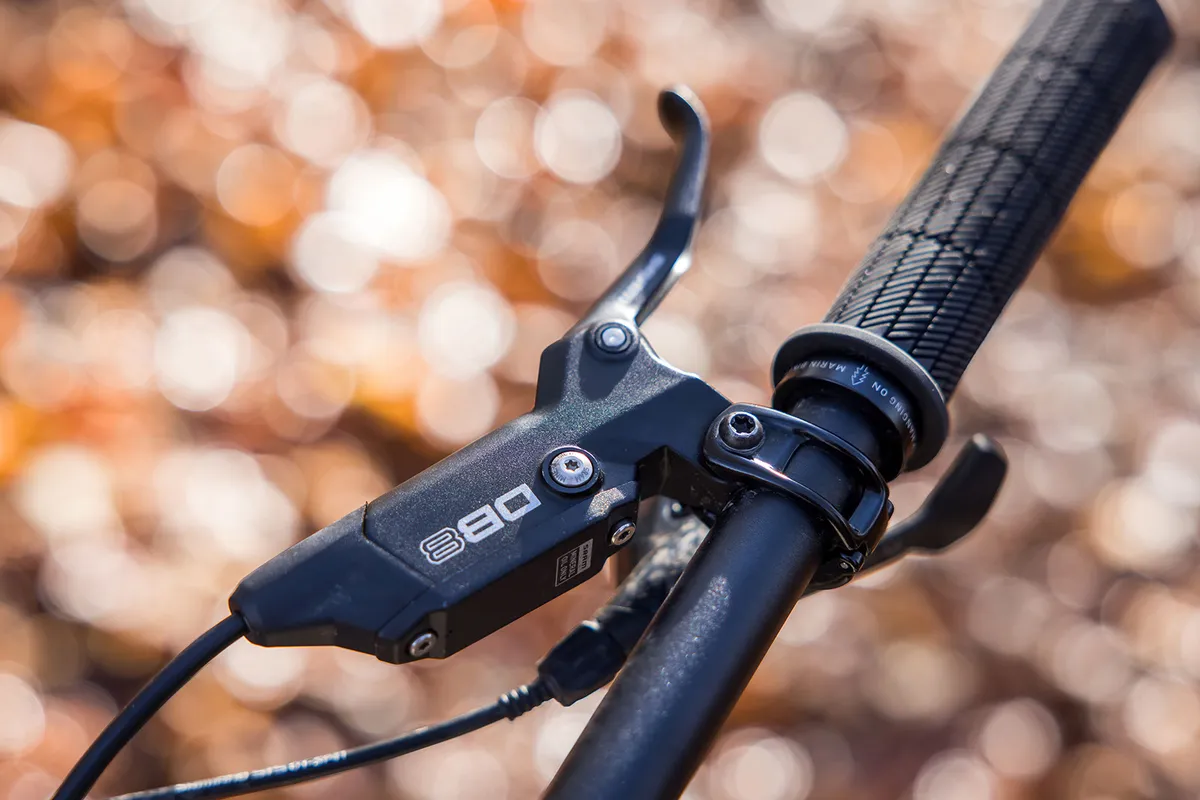
The TranzX dropper has 170mm of travel and is fitted to a Marin Speed Concept saddle.
Also from the Marin stable are the handlebar (800mm wide), stem (35mm long), grips and wheels.
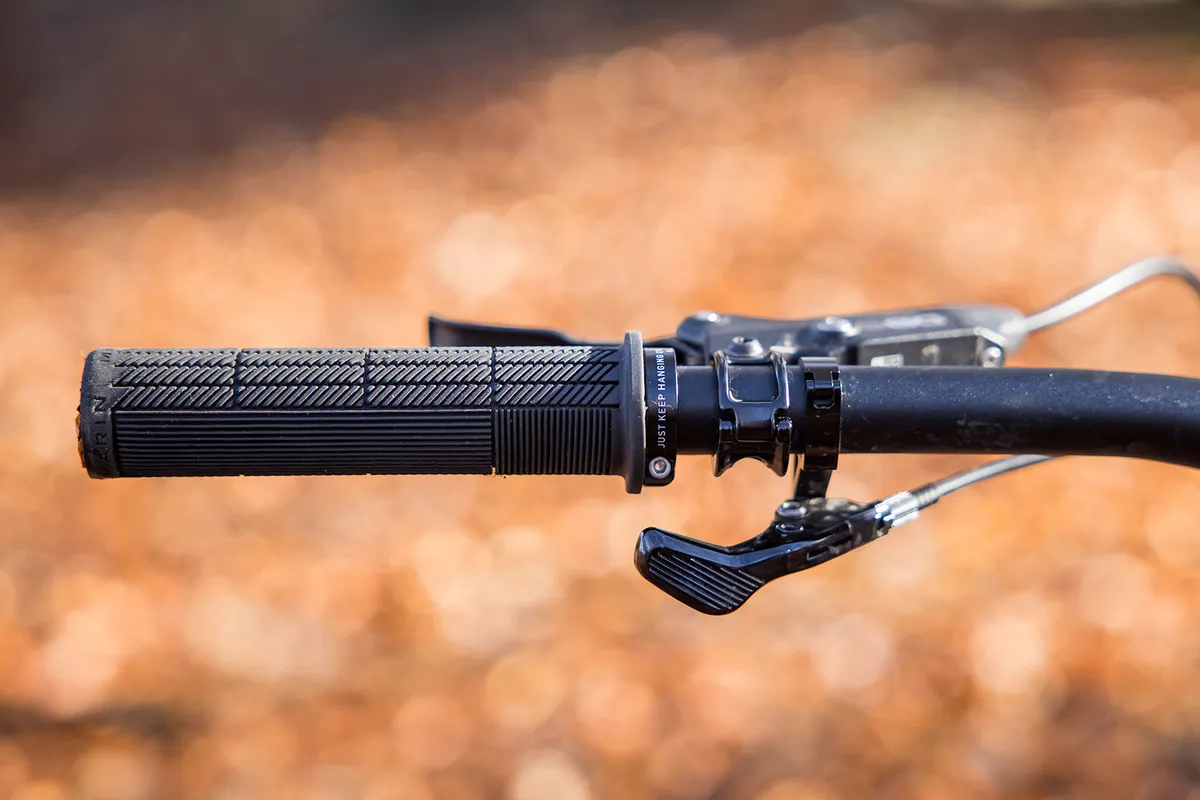
Finishing off the build are Maxxis’ EXO-casing dual-compound Assegai 29x2.5in tyres, front and rear.
All in, the large Rift Zone XR weighs 14.85kg without pedals.
Marin Rift Zone 29 XR specification
- Sizes (*tested): S, M, L*, XL
- Weight: 14.85kg, L size without pedals
- Frame: Series 3 6061 aluminium, 130mm travel
- Shock: RockShox Super Deluxe Select+
- Fork: RockShox Lyrik Select+, 150mm travel
- Shifters: SRAM GX Eagle
- Derailleurs: SRAM GX Eagle
- Cranks: SRAM GX Eagle (1×12)
- Wheelset: Marin Aluminium Double Wall on Formula hubs
- Tyres: Maxxis Assegai EXO 29X2.5in (f) and Maxxis Assegai EXO 29X2.5in (r)
- Brakes: SRAM DB8 200/180mm rotors
- Bar: Marin Trail, 800mm
- Stem: Marin CNC, 35mm
- Seatpost: TranzX 170mm dropper
- Saddle: Marin Speed Concept
Marin Rift Zone 29 XR geometry
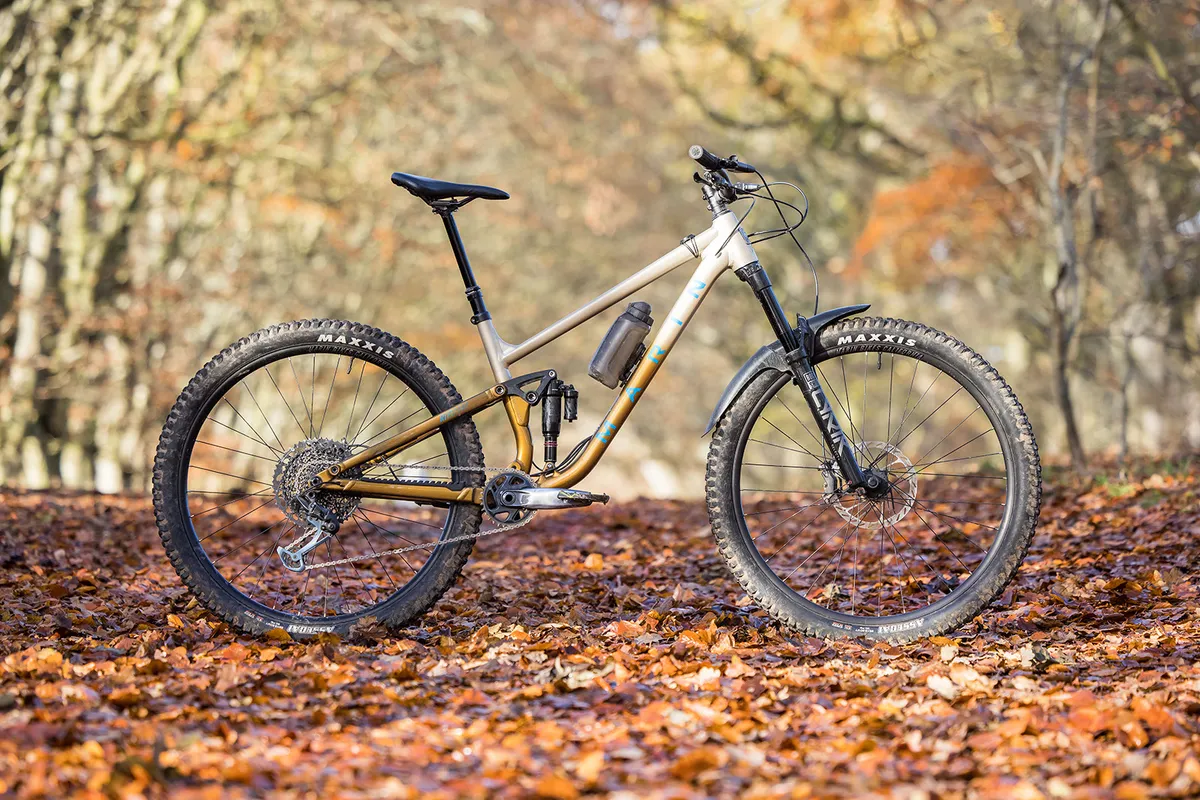
With fork travel that slots it in at the upper end of the trail bikes category, but rear squish that wouldn’t look out of place on a downcountry bike, the Rift Zone’s geometry is the deciding factor, pushing it comfortably into the trail bike realm.
Up front, there’s the relatively slack 64.5-degree head angle. This is matched with a pedal-friendly 77-degree seat tube angle and fairly stout 632mm effective top tube.
| | S | M | L | XL |
|---|---|---|---|---|
| Seat tube angle (degrees) | 77 | 77 | 77 | 77 |
| Head tube angle (degrees) | 65.5 | 65.5 | 65.5 | 65.5 |
| Chainstay (mm) | 430 | 430 | 430 | 430 |
| Seat tube (mm) | 390 | 400 | 425 | 430 |
| Top tube (mm) | 579 | 605 | 632.1 | 663.2 |
| Head tube (mm) | 110 | 115 | 125 | 130 |
| Bottom bracket drop (mm) | 35 | 35 | 35 | 35 |
| Bottom bracket height (mm) | 343 | 343 | 343 | 343 |
| Wheelbase (mm) | 1170 | 1205.1 | 1235.4 | 1266.3 |
| Standover (mm) | 690.2 | 691.2 | 701.7 | 700.5 |
| Stack (mm) | 623.6 | 628.2 | 637.3 | 641.8 |
| Reach (mm) | 435 | 460 | 485 | 515 |
Its reach figure is respectably modern, sitting at 485mm for my large bike. Short chainstays – 430mm across the sizes – should help to keep handling snappy, while a relatively low 343mm bottom bracket is welcome.
At 637mm, the stack is relatively high, once again hinting at the Rifty’s extra rad name and nature.
Why did I choose this bike?

It’s never easy choosing a long-term test bike, and the last time yours truly had a workhorse loaner was back in 2019-20, when I was riding Orange’s Stage 6.
Since then, little has changed with what and how I ride; I still love the gravity-fuelled side of the sport. However, I’m in the rather luxurious position to have as many enduro bikes as I can get my hands on, while trail bikes are less common.
Enter the Rifty.
Its long-travel fork is a definitive nod to my love of descending, while the shorter-travel rear end and light(er)-weight parts – particularly the tyres – are the all-day epic yin to my DH yang.
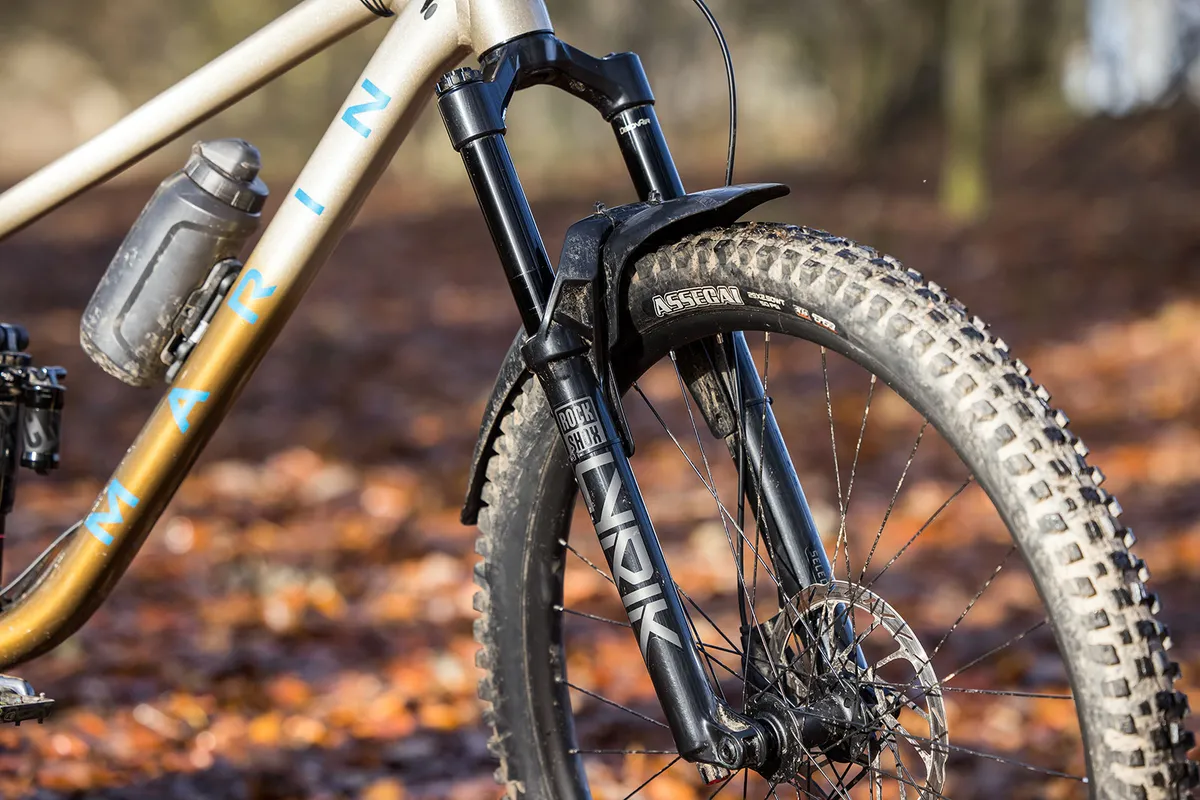
Another key consideration is SRAM’s UDH. While I’ve already tested the top-end XX Transmission group, I’ve also been putting the miles on the more affordable GX version, and needed a bike with this tech.
Plus its geometry hits sweet-spot figures, particularly the steep seat tube angle and generous reach.
I didn’t want to be pining for a bike with different numbers as soon as I got my hands on it, so going for these known quantities feels a wise move.
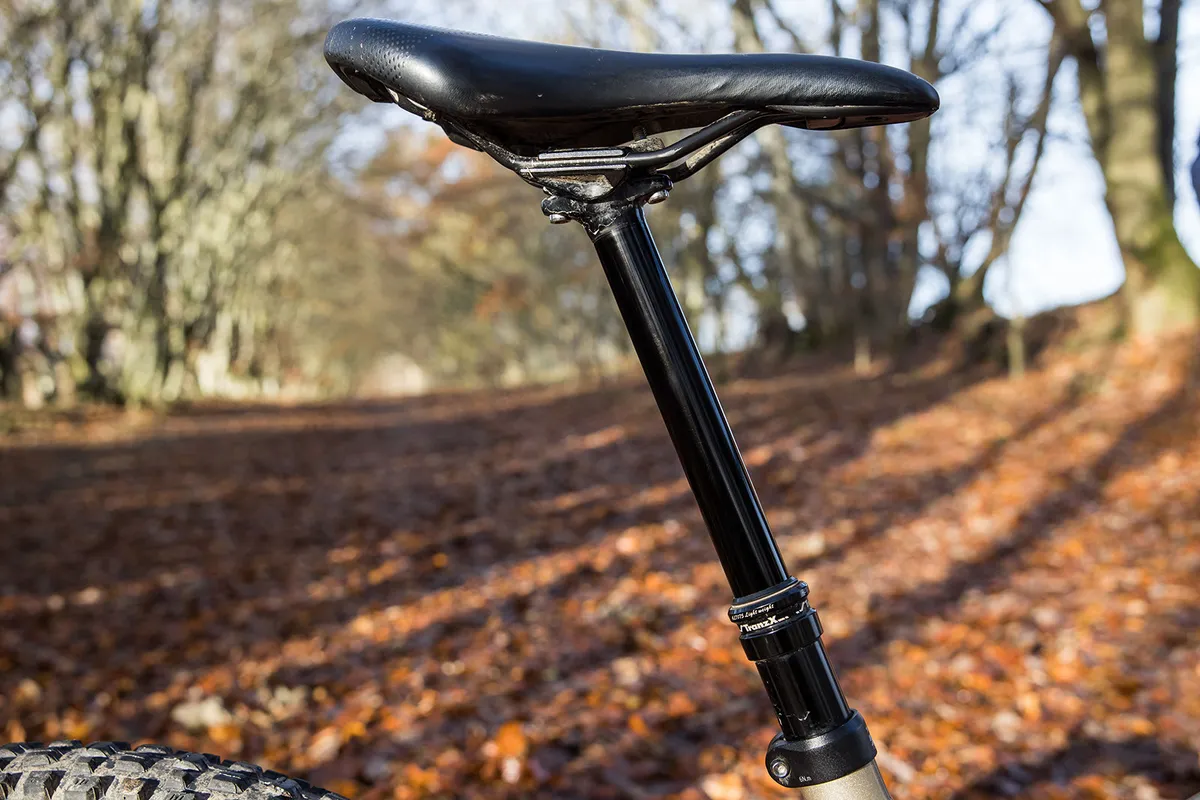
While the lover of all things shiny would have preferred the delightfully coloured AXS Rifty, I’m just as happy with the more basic-spec cream-to-brown fade that I’ve lovingly named ‘galactic shit storm’.
It truly sparkles in the right light.
Marin Rift Zone 29 XR initial setup
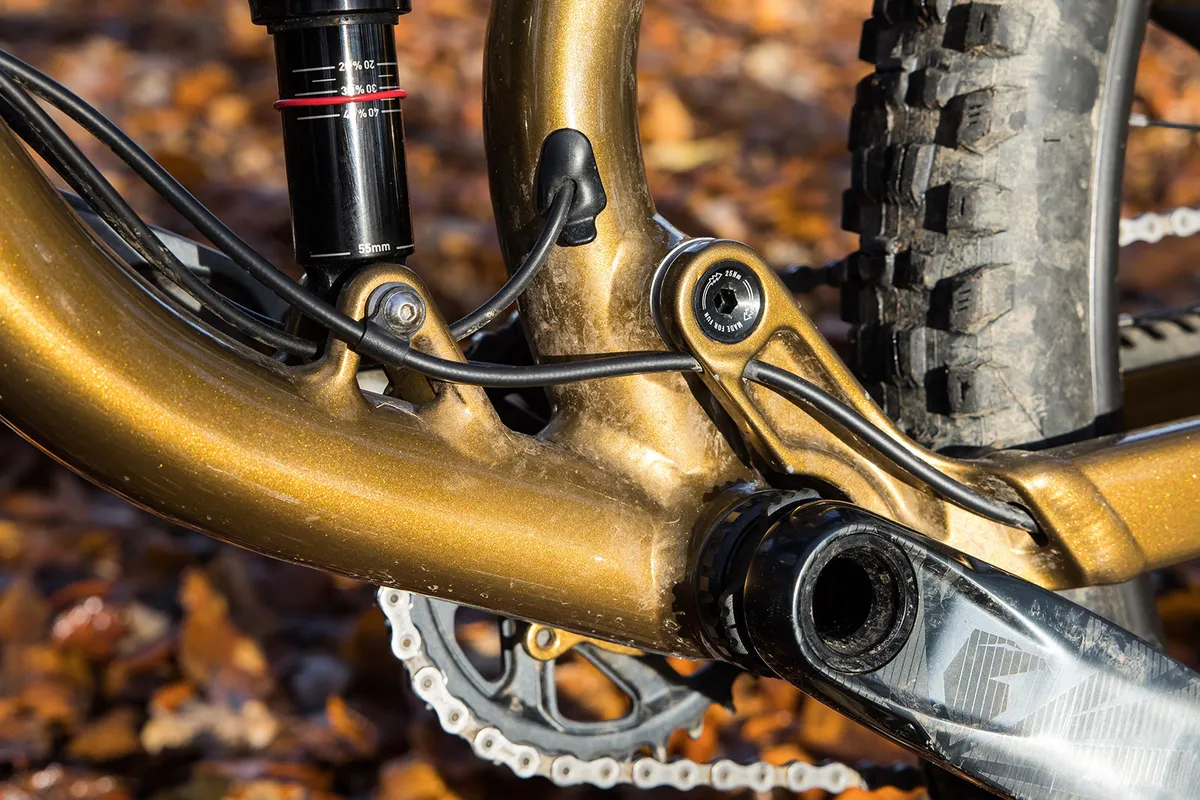
I've got plenty of experience with the RockShox Lyrik fork, making it pretty easy to set up. For my aggressive style and 74kg weight, I installed two volume-reducer spacers and pumped the air spring up to 82psi.
I fully opened the rebound and high-speed compression-damping adjustments, but added plus five clicks from fully open of low-speed compression damping.
Out back, I left the two stock volume-reducer spacers installed and inflated the air spring to 189psi. I fully opened the shock’s rebound, which is its only external adjuster.
The tyres weren’t set up tubeless from the factory, but Marin supplies sealant and valves with its bikes, plus the rims are already taped.
Getting them airtight was just a case of removing the tubes, installing the valves and sealant, and pumping them up. Easy peasy.
Marin Rift Zone 29 XR ride impressions

Having already ridden, reviewed and liked the 2022 Rift Zone XR, I was hopeful jumping on the 2024 version would be a familiar and fond experience.
Despite the switch from Fox and Marzocchi dampers to RockShox, and the higher front end thanks to the fork’s increased travel, the newest model shares its feel with the older one.
What does that mean on the trail?
Pointing its nose up a techy climb, the steep seat tube angle helps keep your weight centralised.
This encourages a more upright ‘winch and plummet’ riding position rather than the shoulders-to-the-bar stance aggressive, XC-inspired trail bikes can generate.
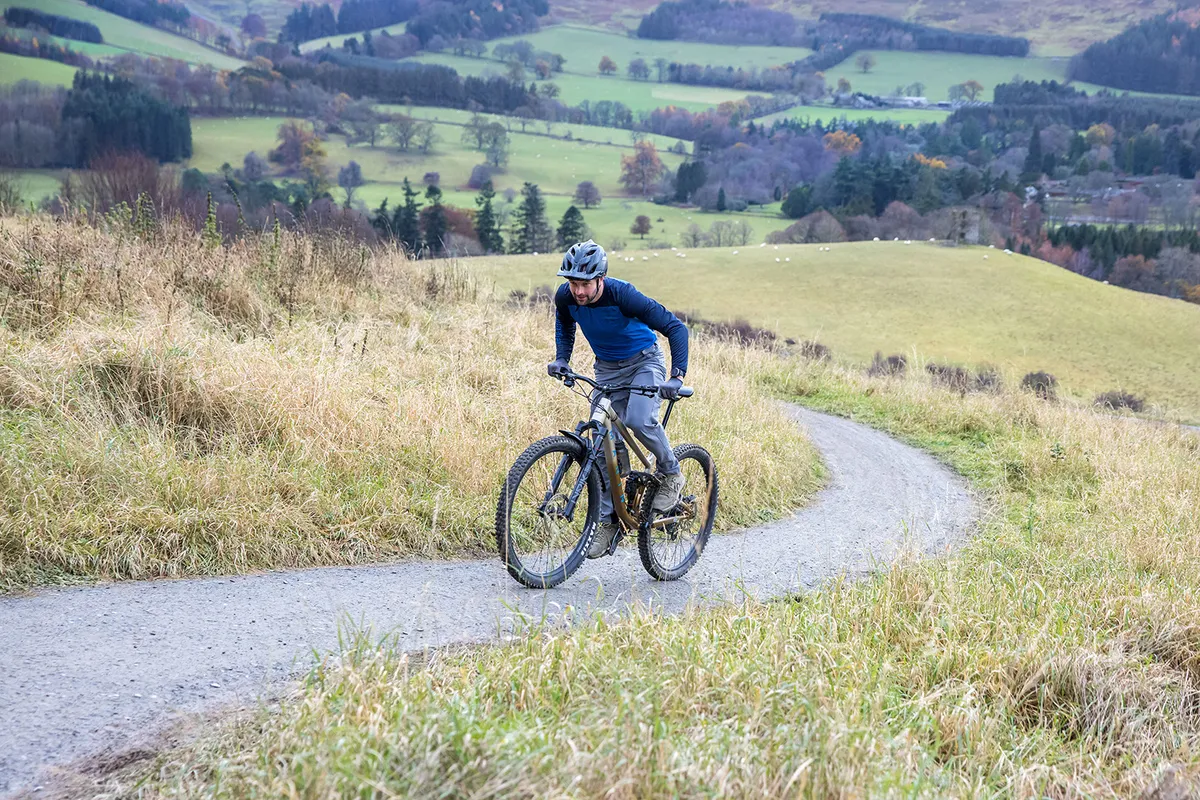
Your hips are positioned comfortably above the bottom bracket, improving pedalling efficiency; there’s little worse than feeling as though your feet are stretched in front of you when you’re trying to crank to the top of a mountain.
Short 430mm chainstays keep the back wheel tight under you.
This is good for driving grip directly into the tyre’s tread, but can cause the front wheel to lift if you’re being lazy with your weight placement. Sit idly on the saddle while climbing and control can walk away from you.
Arguably, this was less of an issue on the 140mm-travel fork model because the front end sat lower, helping increase the amount of weight through your hands.
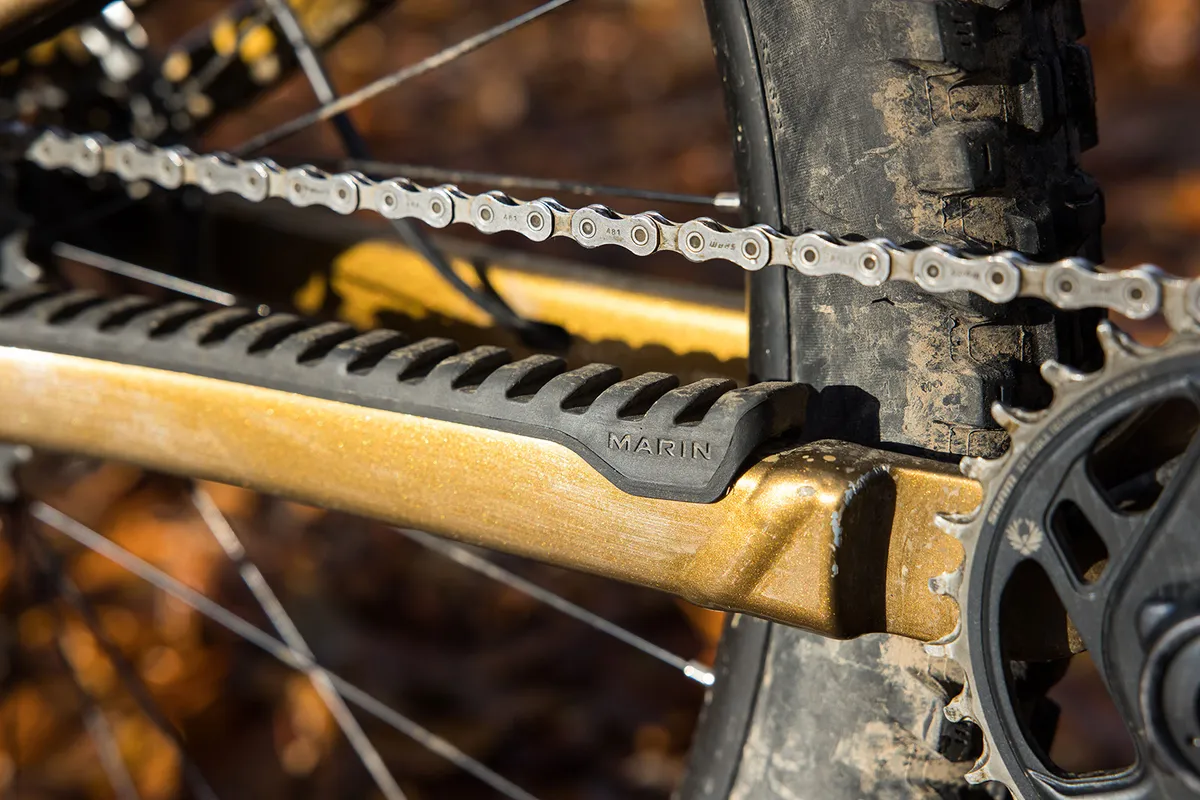
Fear not, though, slamming the stem onto the headset bearing race lowers the front end enough to mitigate this. On the 140mm-travel bike, I ran between 30mm and 40mm of stem spacers – on this one, I’ve got 15mm.
While the axle-to-crown height is increased by 10mm, overall bar height is pretty similar.
In terms of suspension smoothness, little has changed here, either.
The rear end works effectively to absorb trail chatter and small bumps, whether you’re on the gas or not.

Boosting traction on off-camber sections or slimy ascents, the Rifty is a riot to ride.
Its ramp-up is effective at reducing deep dives into the shock’s stroke when it shouldn’t, such as when remaining seated off small steps in the trail.
Pedalling performance is good; the rear end is steadfast and almost bob-free unless you’re pedalling in a really choppy way.
This aids its responsiveness, making sure the blend of long-distance comfort and descending capability is balanced.
On the downs, it’s super-poppy and playful, created mostly by the supportive and progressive rear end.
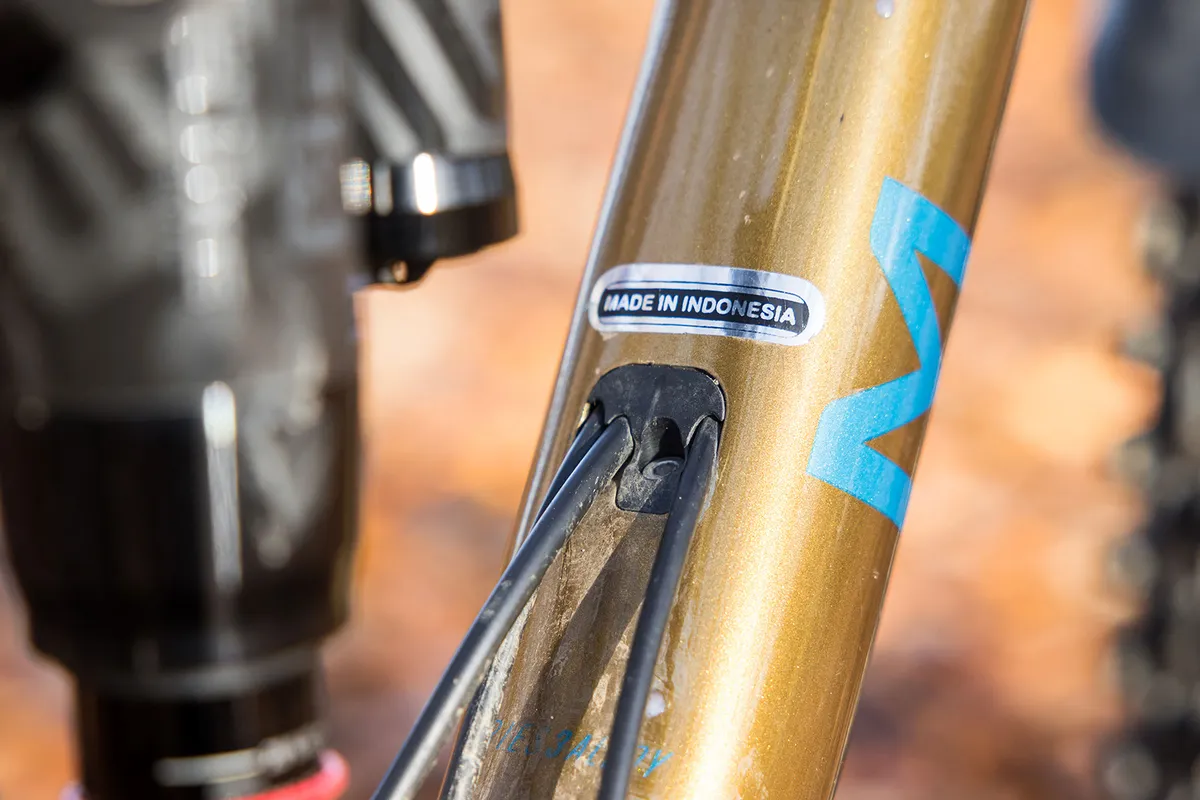
However, it’s best ridden in an aggressive and proactive way. Let me explain.
Imagine spreading hard butter on a soft, steaming, lightly toasted bit of bread; as you move the knife, the bread deforms and crumbles and the butter doesn’t fill in small pockmarks or divots.
Now think of spreading butter on a hard, knobbly rye cracker, such as a Riveta. The cracker’s imperfections can be felt through the knife as you glide it across the surface.
But the pressure you put through the knife makes the butter fill in the gaps and cracks, creating a smooth surface behind it.
Down the trail, the Rifty feels like the butter-spreading knife on a Riveta.
The harder you push it into the trail’s contours, the smoother, faster and more engaging the ride becomes, smoothing out imperfections in a damped and muted way.
The trail doesn't crumble beneath you – a feeling instilled by longer-travel rigs as they absorb even the smallest bumps – but it's effective at doing a lot of the heavy lifting.
Marin Rift Zone 29 XR upgrades
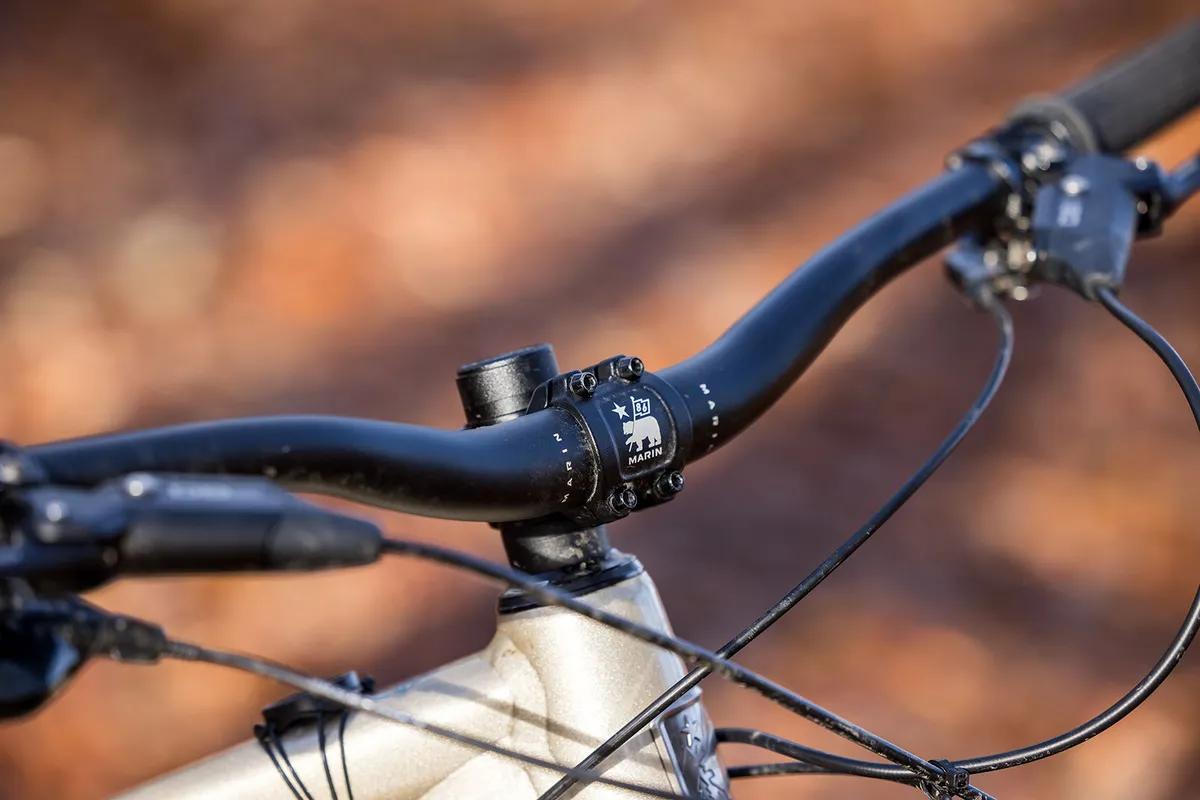
With room for improvement on the scales, that’s going to be my main focus in the short-term.
The wheels are an obvious candidate swap to shave some grams, the front weighing 2.36kg and the rear 2.92kg (with tyres, disc rotors and cassette).
Fortunately, I’ve just tested six trail-focused wheels, some of which represent great value and are impressively light. Stay tuned to find out which set or sets end up on the Rifty.
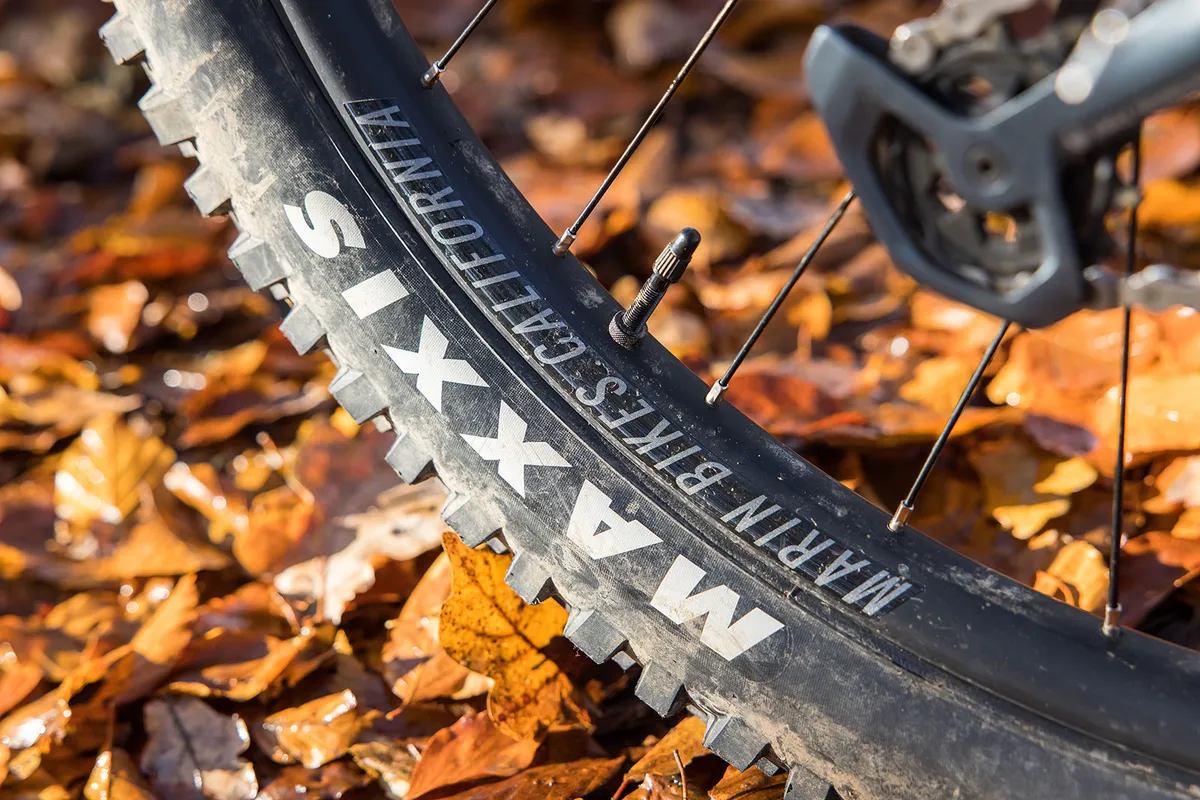
Other key areas are the saddle and seatpost. While not underperforming, they’re hardly the most luxurious or technologically advanced components. Switching them out is a sure-fire way to claw back even more weight.
As I’ve already mentioned, I’ve been testing SRAM’s GX Transmission on this bike, and this is going to be another upgrade.
Before revealing my findings and writing that review, I’m aiming to put 1,000 miles / 1,600km on it to see just how well it fares.
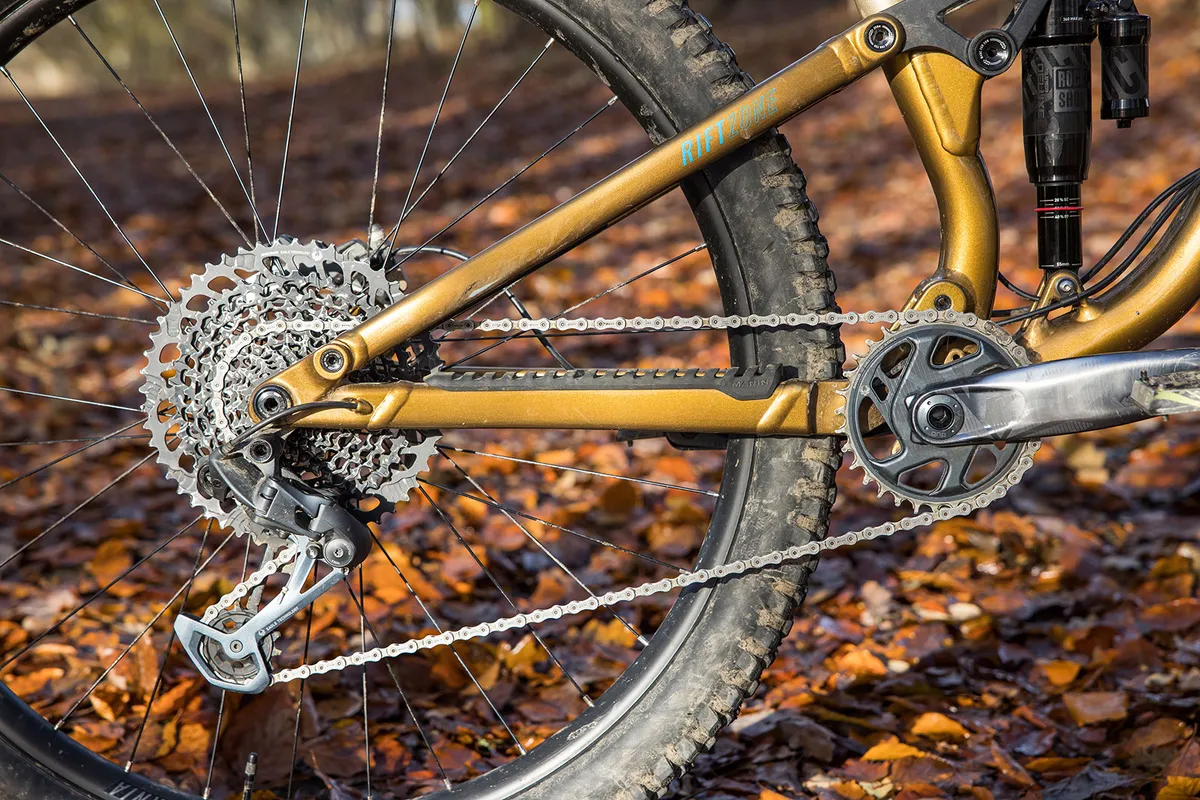
Once again, stay tuned for more on GX specifically, and to find out how swapping from mechanical GX Eagle to GX AXS Transmission alters the performance of the Rifty.
BikeRadar‘s long-term test bikes
BikeRadar's long-term test bikes give our team the opportunity to truly get to grips with these machines, so we can tell you how they perform through different seasons and on ever-changing terrain, through a year of riding.
Some choose a bike from their favoured discipline and ride it hard for a year, others opt for a bike that takes them outside of their comfort zone.
We also use our long-term bikes as test beds for the latest kit, chopping and changing parts to see what really makes the difference – and help you decide which upgrades are worth spending your money on.
These bikes also provide an insight into the team's riding through the year – how they like to ride and where life on two wheels takes them, from group rides on local lanes and trails, to adventures further afield.
To see all of the BikeRadar team’s long-term test bikes – and to stay up-to-date with the latest updates – visit our long-term review hub.
Product
| Brand | Marin |
| Price | A$5499.00, €4289.00, £3775.00, $3899.00 |
| Weight | 14.85kg |
Features
| Fork | RockShox Lyrik Select+, 150mm travel |
| Stem | Marin CNC, 35mm |
| Frame | Series 3 6061 aluminium, 130mm travel |
| Tyres | Maxxis Assegai EXO 29X2.5in (f) and Maxxis Assegai EXO 29X2.5in (r) |
| Brakes | SRAM DB8 200/180mm rotors |
| Cranks | SRAM GX Eagle (1×12) |
| Saddle | Marin Speed Concept |
| Wheels | Marin Aluminium Double Wall on Formula hubs |
| Shifter | SRAM GX Eagle |
| Seatpost | TranzX 170mm dropper |
| Handlebar | Marin Trail, 800mm |
| Rear shock | RockShox Super Deluxe Select+ |
| Available sizes | S, M, L, XL |
| Rear derailleur | SRAM GX Eagle |
SQUIRREL_13090289
